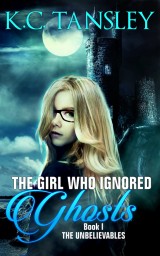Many thanks to Kourtney for inviting me to post and to discuss a bit of my writing process and my new book, The Vendetta, out now from Etopia Press. There are many, many ways to reveal character in writing, but one I like to explore—maybe because I am particularly drawn to exotic, luxurious locations in my stories—is SETTING.
Things we say about our characters:
“They just took over the page.”
“They surprised me when they…”
“I didn’t want to leave them when I was done writing.”
Things we say about our settings:
Erm…well. What do we say about our settings?
Setting is the most under-appreciated as a tool in a writer’s kit for delivering on character. “Oh, that’s just description,” we say, and we cast setting out with all that other wordy stuff in favor of an action sequence or an exchange of dialog. In all cases, however, we want our readers to connect emotionally with the characters. Setting, I think, knows all and reveals all about character. Setting concerns where the story takes place, but that “where” is only important as it relates directly to the story. And, as we know, the story is what happens to the characters.
mood, appearance, motivation, backstory, inner conflict, plot conflict
These are some of the elements of character, but how do we get them onto the page? How do we show a character’s mental landscape so the reader can react to what that character does?
1. It was a dark and stormy night… Setting the mood.
By mood I don’t just mean the tone of the scene, I mean the emotional state of the POV character. Is she grumpy, love-struck, embarrassed, weepy, determined, or something else? Is there a place you can put her that conveys this emotion? And what comes first, the mood or the setting. Can a dark castle intensify the character’s sense of apprehension? Does a beach scene relax your character, make her happy?
In this example from my recent release, The Vendetta, I am trying to convey my main character’s mood of isolation, but also a touch of wonder from her about her current situation:
He took her hand, sending a frisson of electricity up her arm. “Come into the living room. I’ll be back in just a second.”
Lisa followed him into the cavernous space. He disappeared into the other bedroom while she went over to the bank of floor to ceiling picture windows that faced the looming mountain. On the slopes she could see the tiny yellow headlights of the Caterpillar tractors that groomed the runs for the next day’s skiers. Nestled below, the ski village’s lights sparkled with nightlife. “Wow,” she whispered. “What a winter wonderland.”
2. The beard on his chin was as white as the snow. Appearance—working the metaphor.
There’s some debate in the fiction-writing realm about how much to describe the physical characteristics of your story people. Often there are genre expectations for more or less description, but in all cases the author needs to provide enough description so the reader can picture the character. Setting can help invoke what the character looks like by providing ample scope for figurative language, which is a literary umbrella-term covering such devices as simile (comparison using like or as), metaphor (direct comparison), hyperbole (exaggeration), and a few others.
Here my main character in The Vendetta confronts her desire for the romance character and likens his features to the surrounding buildings (using both simile and metaphor).
Her stomach did that now-familiar flip. God, she had to stop being so unreasonably happy to see this man. The irritating schoolgirl giddiness firmed her determination to find out more about him and to keep him at arm’s length.
He seemed perfectly suited to the location among the splendor of Rome’s architecture, as if he were a Roman god. His features, carved and beautiful, gave nothing away. If she dared admit it to herself, she desired him more than she’d desired any other man.
3. The butler did it… Motivation—why, why, why?
Real people do things for a reason, so it follows that story people do too. Where the story takes place can reveal something about why the character takes action (or not). In addition, setting carries powerful emotional imagery, giving the reader clues about the character’s motives. This imagery can be as simple as dark versus light or as subtle as the kitchen versus the car.
In this final example, the setting conveys the turbulence of Lisa’s inner thoughts as the reader gets a glimpse of WHY she needs to protect herself from this man she finds so attractive.
Pellets of ice smacked hard against the window, driven by the force of the wind. Deep, new snow had buried the winter wonderland she’d marveled at last night. She pressed her hand to the cold pane.
She spent a few moments wondering if she would inevitably succumb to Nick’s deep voice and sultry eyes if she saw him again. She pressed her fingers to her lips, remembering the wild taste of him…Shaking off the thought, she stared out at the swirling white landscape. The truth was, she had always found it difficult to protect her pitiful, vulnerable heart when a man whispered how much he wanted her.
How do you use setting in your stories? Do you think it’s a good way to convey character, or can it bring on too many cliches? What is the best way to describe a character?
***
When she’s not spending ridiculous amounts of time at the computer dreaming up interesting characters and spicy conflicts for her fiction writing, Kecia Adams loves to ride her bike really fast and shop for shoes. The Vendetta, her first contemporary romance with Etopia Press, is available at your favorite e-book retailer, including Amazon and Barnes & Noble. You can find out more about Kecia and her writing at
website & blog: www.keciaadams.com
Twitter: http://twitter.com/KeciaAdams
Facebook page: http://www.facebook.com/KeciaAdamsAuthor
In The Vendetta, vengeance intersects the international world of fine art when ski town barista Lisa Schumacher serves up espresso—with a dollop of passion—for Italian businessman Nick Carnavale. Lured to Rome by family ties, Lisa must race to find a mysterious missing painting in time to convince Nick that love, and life, is worth more than his revenge.
Buy it here:










Kecia, I’d love to hear a little more about why you selected Rome for your setting and how you researched it.
HI Kourtney,
The short answer is, we lived in Rome for three years when my military guy was stationed there. I was inspired! 🙂
Longer answer: I was fortunate to be able to really explore Rome, on foot and on a daily basis. I would take the bus down to the city center at least twice a week and I would just pick a place to sit and watch people. The art and architecture were amazing, but it was the people–both the Romans and the tourists–who provided fodder for my stories. The Vendetta grew sort of organically from those moments. I don’t think I really chose the setting, it sort of chose me. 🙂
When it came to pulling the book into publishable shape, I honed some of my Rome ramblings by cutting ruthlessly, doing some research on specific paintings and works of art, and looking at a map of Rome to make sure they could walk where I had them walking.
My work-in-progress is also set in Rome…and Scotland. Just love those accents for heros!
That’s fascinating! I’m so jealous you got to do all that on-site research. Very lucky. 🙂 Accents are a weakness of mine as well!
Great blog post, Kecia! Thanks for using examples from your book to illustrate the points you made. I especially like how the outer setting of the snow reflected Lisa’s inner state. Kourtney–happy to have found your blog!
Rochelle, thanks for stopping by. Glad you enjoyed Kecia’s guest post. 🙂